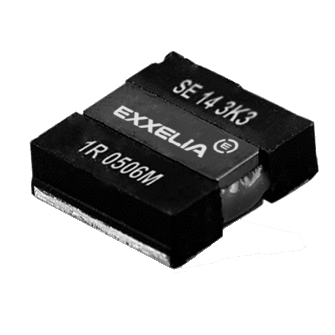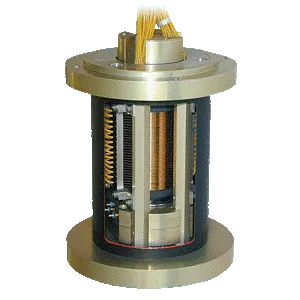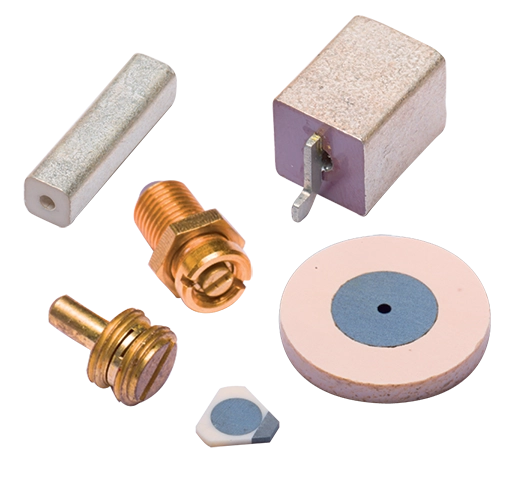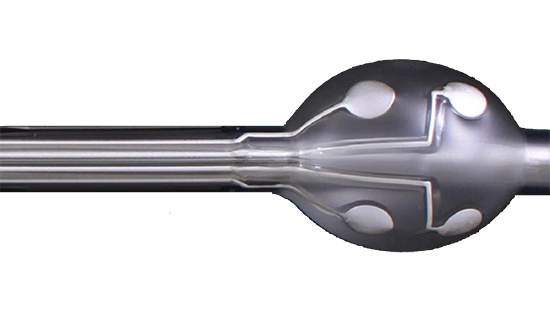

In the field of electrical engineering, transient events involving magnetic components present significant challenges that can lead to system failures. Understanding and mitigating these threats are essential to ensure the reliability and longevity of electrical systems.
Understanding Electrical Transients in Magnetics
This detailed article explores the origins of electrical transients in magnetics and proposes comprehensive strategies to counter these threats effectively.
Electrical transients are sudden, short-duration spikes in voltage or current that can originate from various external stimuli such as lightning strikes or abrupt changes of input or output conditions. However, even when an electronic system is operated at nominal conditions, there can be unexpected electrical transients within the system related to electrical instabilities within components or between components. These inherent electrical instabilities often depend on equivalent RLC dynamics and may involve nonlinear properties of materials with resultant nonlinear functional impacts. These dynamic conditions can cause unexpected stress densities within the electronic system with related increased risks of EMI, malfunction, or catastrophic system failure.

State Variables and Electrical Transients
Mechanical and electrical systems follow laws of physics that depend on time based derivatives of state variables. These variables contribute to the input and output reactions of the system to transient perturbations. The combination of dissipative and reactive parameters causes amplification, oscillation and decay of the operating signals within the electrical system.

Energy and Passive Components
Resistors may be used to control voltage or current with the consequence of lost energy. Like resistors, inductors and capacitors are classified as passive components but perhaps more accurately described as reactive components since their functions depend on consequences of stored energy. Inductors generate opposing voltage to slow the change in their current. Capacitors absorb or release charge to slow the change in their voltage. These principles cause circuits with inductors and capacitors to induce voltage and current respectively to resist changes in stored energy. The induced amplitudes of voltage and current are inversely proportional to the time constant of the equivalent circuits. Smaller time constant means faster decay and therefore the stored energy in the reactive component generates larger voltage or current amplitudes in the shorter time interval to change its energy to a different level.

Transformer Impacts
Idealized transformers bring the added functions of dynamic impedance transformation, so that a given load impedance is transformed according to the square of the turns ratio, while additionally providing the option of isolation as needed in many applications.


However, realistic implementations of transformers incorporate parasitic RLC components that largely impact the response of the transformer to transients or abrupt transitions of voltage or current. Since power electronics frequently use electronic switches to control the flow of current and the application of voltage, the related abrupt transitions of voltage or current bring risks of amplification, oscillation, saturation and breakdown.
Transformer Susceptibilities

Since high voltage step up transformers are inherently loaded with the self capacitance of their own high voltage windings, high voltage transformers bring the additional risks of series resonant circuits formed by the combination of inherent leakage inductance and self capacitance. Magnetization characteristics of core materials bring more risks of nonlinear magnetization and saturation effects that make the magnetic component susceptible to turn on / turn off phasing, volt second unbalance and other impaired functions from residual magnetization.
Eddy Currents
 Since transients occur over a shorter time interval than the fundamental frequency of operation, their high frequency harmonics result in dynamic stress densities that are impacted by eddy currents induced within the conducting volumes of the core and coil. These induced high frequency eddy currents cause flux crowding at the outer surfaces of laminations and current crowding particularly in the neighboring conductors of primary and secondary windings from the magnetic proximity field effect.
Since transients occur over a shorter time interval than the fundamental frequency of operation, their high frequency harmonics result in dynamic stress densities that are impacted by eddy currents induced within the conducting volumes of the core and coil. These induced high frequency eddy currents cause flux crowding at the outer surfaces of laminations and current crowding particularly in the neighboring conductors of primary and secondary windings from the magnetic proximity field effect.

Electric Field Intensity
High transient voltages cause greatest risks of breakdown at regions of highest electric field intensity. The induced peak electric field intensity between insulated conductors depends on their average potential difference, the thickness of the separating dielectric and the geometry of the opposing conductors. Small wires or ribbon conductors can cause small radius of curvature at edges of winding layers. The resultant sharp edges may increase the microscopic local electric field stress by a factor more than 3 times the average electric field stress. Inconsistencies within the separating dielectric can further increase electric field stress particularly at voids or cracks. The transient induced peak electric field intensity, especially considering these field enhancement effects, may then cause partial discharge and increase risk of premature insulation failure.

Product Development Mitigations
A plan for transient risk mitigation in the overall design and development process may include DOEs (Design of Experiments) performed on selected materials when high risk stress densities are anticipated. Further, selected subassemblies can be constructed to empirically simulate a portion of a complex assembly to verify successful RRTs (Risk Reduction Tests) prior to proceeding to build an actual prototype. Accelerated Stress Tests performed on selected prototypes can verify design margins by probing induced failure modes. Therefore, the New Product Development Plan may include these planned milestones of DOEs, RRTs and ASTs to reduce risks during design verification.

Step Up Transformer Example
Returning to the case of the high voltage step up transformer, we can imagine a power electronics application circuit that creates an abrupt turn on of primary voltage from a starting condition of zero output. The resultant output voltage will naturally evidence oscillation and an output that exceeds expected output (called overshoot) from the inherent internal loading of parasitic leakage inductance and self capacitance.
In this example for an electronic power supply operating at 100 kHz normal operation, the overshoot is 70% larger than nominal output with a ringing frequency 35 times higher than normal operating frequency. Similarly, at turn off, the output is characterized by excessive reverse voltage (called backswing) from the inherent parasitic components associated with this time interval. In this example, these components cause an induced backswing voltage more than 2.5 times higher than the nominal output of the preceding turn on interval with lower characteristic ringing frequency. To mitigate risk of unexpected transient response, the transformer parameters that impact ringing in each interval should be identified and controlled from work performed in the new product development process.

Transformer Volt-Second
 Many transformers are designed to operate with negligible bias current. However electronically controlled switches that provide bidirectional input voltage or load current may be susceptible to time delay or there may be some other reason for unexpected net Volt Second unbalance. In these applications, the effective residual average voltage is impressed upon the DC resistance in the circuit and therefore a considerable bias current may be induced causing a corresponding DC magnetic field in the transformer core with risk of saturation.
Many transformers are designed to operate with negligible bias current. However electronically controlled switches that provide bidirectional input voltage or load current may be susceptible to time delay or there may be some other reason for unexpected net Volt Second unbalance. In these applications, the effective residual average voltage is impressed upon the DC resistance in the circuit and therefore a considerable bias current may be induced causing a corresponding DC magnetic field in the transformer core with risk of saturation.
Transformer Soft Start
 If a transformer is turned off at the moment of peak magnetic field in the core and then instantly restarted without resetting the remanence magnetic field to zero, there is the worst case condition of the full swing of magnetic field excitation becoming stacked on the remanence level. This worst case startup condition will cause saturation if the transformer was not designed to provide a restricted peak flux density under normal operating conditions. For the most compact transformer design, controllers in power electronics may incorporate a progressive ramp of applied voltage so transformer core saturation is prevented. Yet the design of the transformer must be developed considering the details of this soft start control to assure that sufficient head room prevents saturation under worst case conditions including environmental factors.
If a transformer is turned off at the moment of peak magnetic field in the core and then instantly restarted without resetting the remanence magnetic field to zero, there is the worst case condition of the full swing of magnetic field excitation becoming stacked on the remanence level. This worst case startup condition will cause saturation if the transformer was not designed to provide a restricted peak flux density under normal operating conditions. For the most compact transformer design, controllers in power electronics may incorporate a progressive ramp of applied voltage so transformer core saturation is prevented. Yet the design of the transformer must be developed considering the details of this soft start control to assure that sufficient head room prevents saturation under worst case conditions including environmental factors.
Current Transformer Example
A current transformer can present a similar risk of saturation if the sensed current surges to higher peak values than expected in normal operation. In this case, the fault current of 600 ARMS is 6 times the steady state current yielding a potential worst case peak core flux density that is 13 times higher than the steady state flux condition. A state space simulation of the magnetization curve and the saturation event can be used to obtain confidence at the design stage that the current transformer can output sufficient secondary voltage so that it can trip the alarm for a condition of high fault current as planned.


State Space Representation
This technique of state space representation of the nonlinear saturation effect in magnetic material can be used to simulate the impact of a high energy pulse on an inductor used in a pulse forming network. The state space representation also provides insight to the creation of an equivalent scale model of the nonlinear inductance. In this case an empirical simulation of a pulse current having 3500 A peak can be undertaken with a scale model of the final system.
Special Production Controls
 Empirical techniques to replicate high frequency transient pulses can be extended from the research and development phase to yield a production process control test assuring core material consistency. For example, an effective high frequency peak current test may be implemented in normal production screening at worst case environmental conditions.
Empirical techniques to replicate high frequency transient pulses can be extended from the research and development phase to yield a production process control test assuring core material consistency. For example, an effective high frequency peak current test may be implemented in normal production screening at worst case environmental conditions.
Flux Remanence
 A closing example is the design of a Magnetorquer to create a magnetic moment for interaction with the Earth’s magnetic field for the purpose of yielding a required torque. After turn off, the remanence magnetic moment should be accurately measured and sufficiently mitigated as needed to assure proper operating function of the system.
A closing example is the design of a Magnetorquer to create a magnetic moment for interaction with the Earth’s magnetic field for the purpose of yielding a required torque. After turn off, the remanence magnetic moment should be accurately measured and sufficiently mitigated as needed to assure proper operating function of the system.
Summary Recommendations
In conclusion, this article has reviewed the natural tendencies of an electronic system to be vulnerable to the risks of unexpected electrical transients. Selected examples have been shown to illustrate various technical considerations with suggested mitigation strategies. Following is a summary list of recommendations to reduce transient risk when designing and developing magnetics for electronics applications:
• Since electrical transients contain largely high frequency harmonic components, use high bandwidth instruments to detect latent transient amplification and persistent ringing even at normal operating conditions of the system.
• Correlate observed transient waveforms to particular RLC components within the operating circuits. Reduce prioritized risks using appropriate mitigation actions in the design phase with related special test controls in production as needed.
• Evaluate possibilities of net DC polarization and latent bias currents for magnetics in switched mode circuits without capacitor blocks.
• Check flux density headroom from remanence for worst case phasing of voltage at turn on considering minimum operating frequency and maximum voltage and temperature.
• Verify current transformers responsible for circuit protection can detect transient overcurrent despite saturation reduced output.
• Verify residual magnetization does not cause unacceptable residual magnetic moment at turn off in electromechanical applications.
• Use appropriate additional surge arresting devices to protect circuits susceptible to lightning.
Victor W. Quinn
US Director of Engineering & Technology
Exxelia Magnetics
Certified
ISO / EN / AS
All Exxelia sites are ISO9001, EN9100 or AS9100 certified
7
end-markets
Aerospace, Defense, Medical, Rail, Energy, Industry and Telecom
3000
customers
spread in more than 50 countries on all continents
Custom
designs experts
from minor catalog product adjustment to 100% custom design based on your specifications
40+
Aviation programs
Exxelia is on board most business, commercial & regional aircraft










